Feeling the pinch: Local restaurants make tough decisions to fight inflation
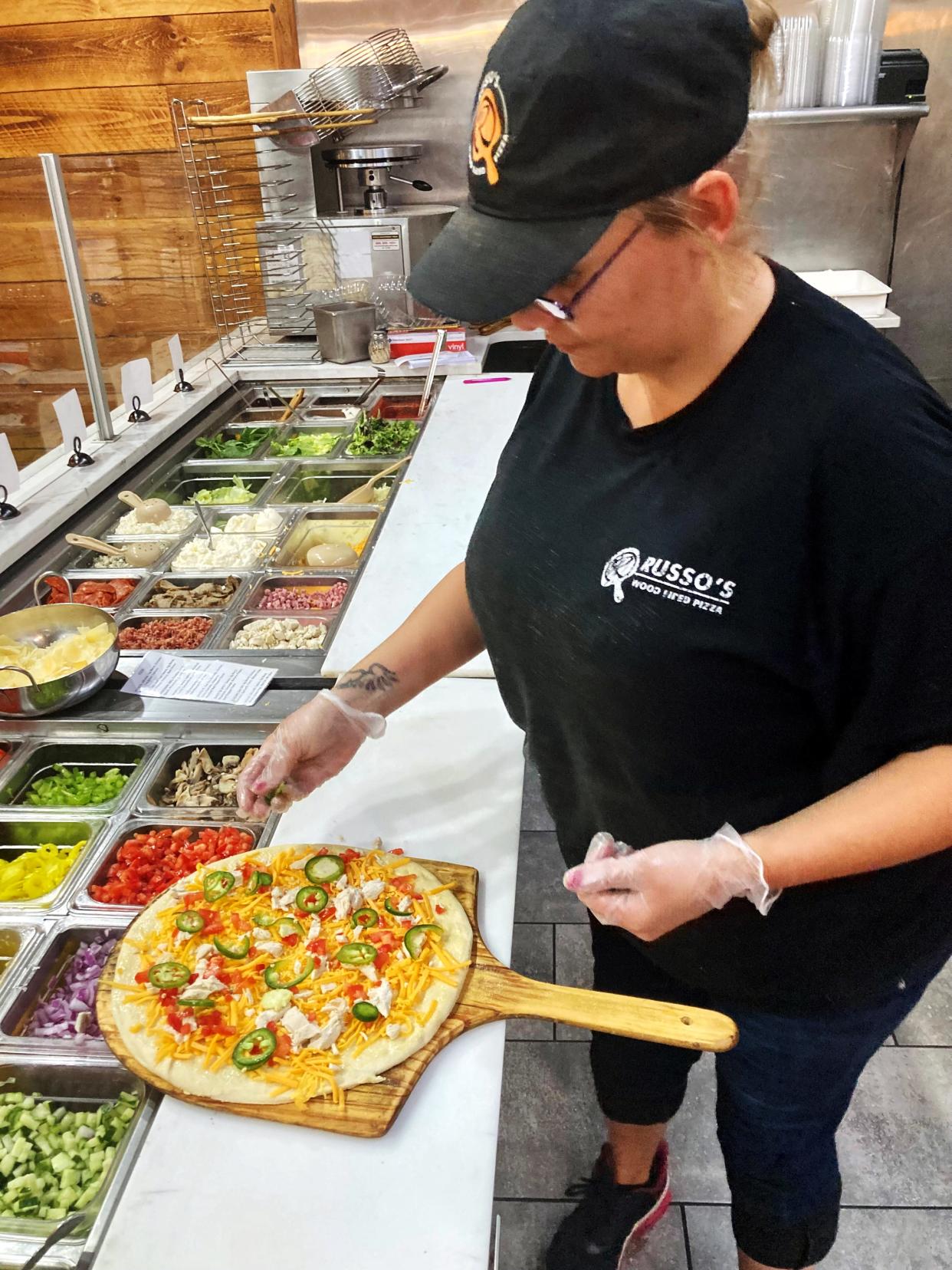
ZANESVILLE — The Russo brothers will soon celebrate their fifth anniversary at Russo's Wood Fired Pizza.
The road has been sometimes unpredictable for Anthony and Vincent, from a worldwide pandemic that shut down indoor eating to staffing issues and continued inflation that has forced multiple menu increases.
Like all businesses, especially those small in nature, the pinch on the pocket book is real.
"Our main things are flour, cheese and pepperoni," Anthony Russo said. "In the last year, every single one of those products have doubled in price. We used to pay $12 to 13 for a bag of our flour, now it’s about 25. We used to pay $60 for a bag of pepperoni, now it’s $110 to 120. Cheese, the most important thing, we used to pay about $35, now it’s $60.
"What you spent $1,000 a week on is now $2,000, just in cheese, that one product," Russo added. "It doubled. That's why we did a couple of fairly quick price bumps."
They're not alone in the pain.
The Barn, among the largest locally-owned restaurants in Zanesville with some 70 employees, will soon release a new menu with updated prices.
Owner Jim Watson disdains the idea of passing costs onto customers, but the economic reality of today's restaurant climate gives him no choice. Like Russo's, he has raised wages to remain competitive and support his employees.
"Wholesale costs are 15 percent more this year than last year," Watson said. "That's $15 on every 100 that you spend. When you think about that and those kind of percentages, it's a really huge impact to what we are trying to do."
Forty minutes west, Champs Pizza and Pub in Thornport — Perry County's closest equivalent to The Barn with some 50 employees — resorted to raising menu prices for the first time since it opened in 2007.
Owners Brad and Erin Turnes have endured the same issues as their Zanesville counterparts. Their bi-weekly food product costs have increased by 60 percent since the start of 2022.
That came on the heels of staffing problems that has plagued the service industry since the COVID-19 pandemic began in March 2020.
The latter has stabilized, thanks largely to the hiring of a new general manager, but the former continues to make the price of doing business an expensive one.
"It's all of the little things," Erin Turnes said. "Thankfully people are supporting local, especially since COVID."
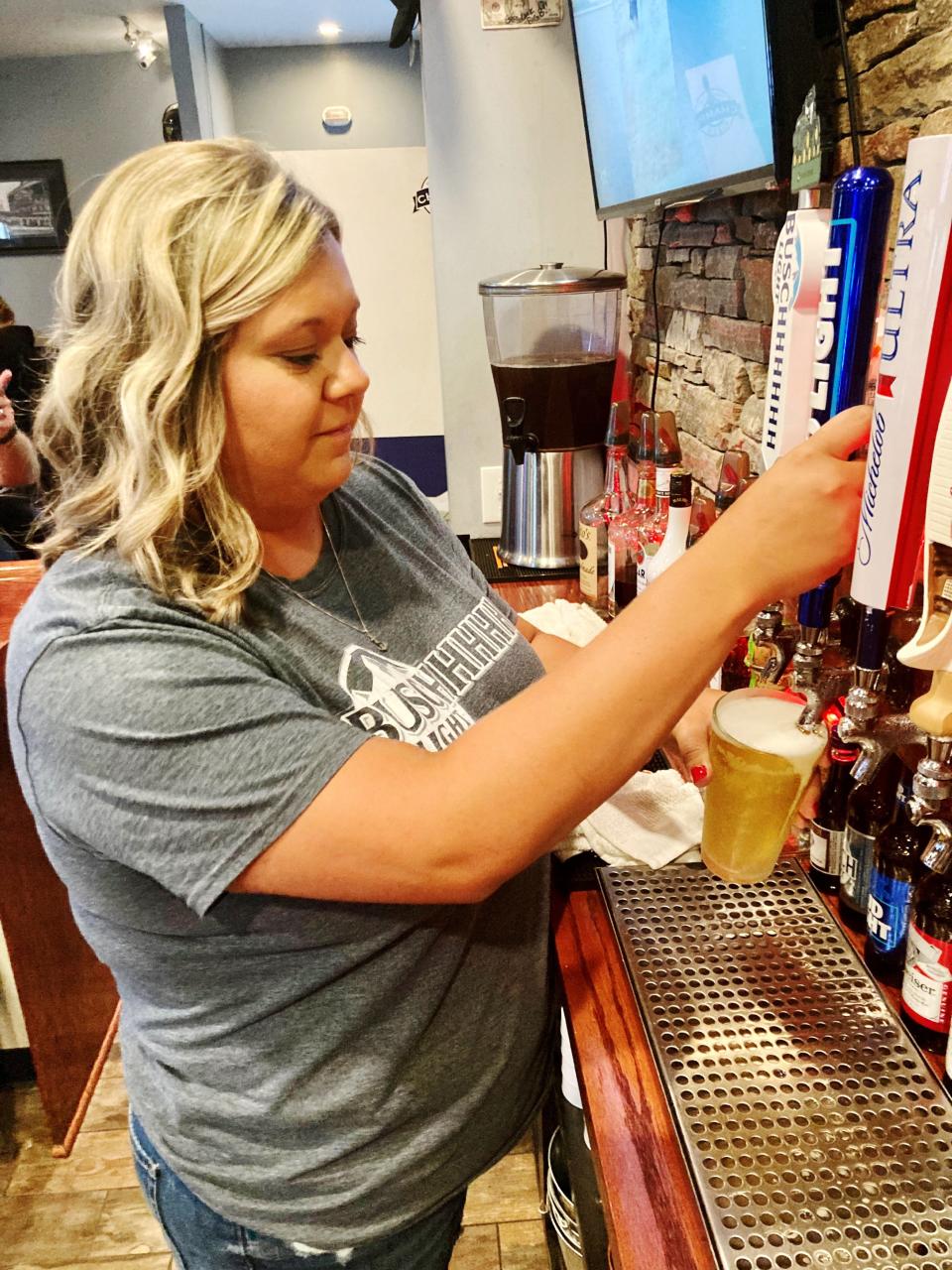
Getting creative
Russo's used the pandemic to find new ways to stay in the game as those around them grasped for straws of life. As the only wood-fired pizza joint in a city of more than 25,000 residents, they qualify as a niche eatery.
Then the shutdown occurred. It was then that their creative side entered the fray, which meant adding delivery service to a restaurant designed for sit-down dining.
"This is built for you to come here and the experience of coming here and watching your pizza get built like you would your burrito at Chipotle," Russo said. "It's seeing the toppings and watching your pizza get cooked in the wood-fired oven. We’re not set up for delivery drivers. But push come to shove, during COVID we had to get out there."
That also led to the first menu increase in its three-year history, as labor shortages and wage incentivizing became the norm at most businesses to attract and keep workers.
He currently offers .50 raises every six months to employees, the majority of whom are high school- and college-aged, with older adults providing management. They are currently hiring.
That follows a national trend of restaurant employees returning to work. According to MarketWatch, bars, hotels and other service industry fields added more than 67,000 jobs in May. That sector had almost 1.6 million job openings during that time, per the Bureau of Labor Statistics.
But even as wages rise and positions continue to fill in service industries, the adjusted average hourly earnings rate decreased by 3% from 2021. It raises to 3.9% when factoring decreased hours worked, per the BLS.
Russo said the staffing shortages that have plagued businesses since the pandemic began have followed national trends, something he feels has been aided by parents allowing their children to return to work.
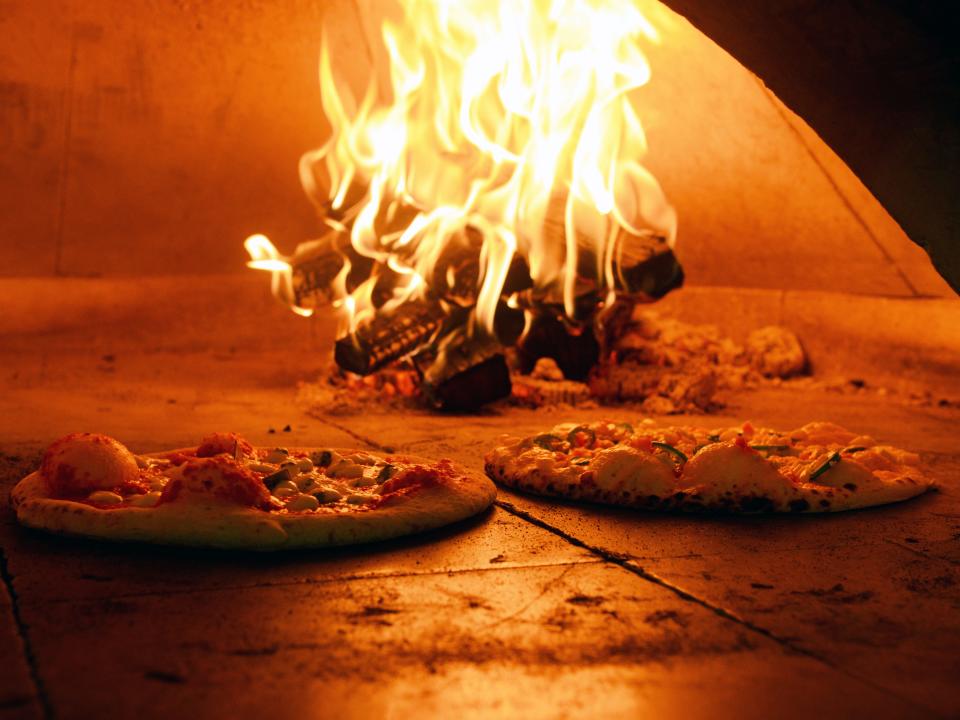
The operating costs, however, are another matter.
With no control over food product costs, he said they've searched the supplier market to "tighten up" spending on hard paper products. Specifically, he said they have new pizza box suppliers and no longer use logo cups, instead using cups provided from Pepsi.
He is also aided by a steady flow of catering work for businesses and other events with their mobile oven, including outside of Muskingum County. Weddings have been particularly fruitful.
At the restaurant, they have followed a trend that seemed unthinkable to most restaurants prior to the pandemic — closing one day per week.
He has seen business remain steady, despite losing a day of business.
"COVID did a lot of things in the restaurant world," Russo said. "Carry-out really changed the game. It makes the operator think, ‘I wish my entire business was carry-out.’ It’s the things you don’t think about, like ‘I don’t have to buy toilet paper anymore. I don’t have to buy hand soap for the bathrooms. We don’t have to spend an extra hour every night cleaning this area of the restaurant, because nobody is going to step foot in there but maybe once a week.’
"I think that has opened people’s eyes," he added. "Some of the closings on Mondays are staff related, but some might be just be better operating. It makes sense. I can do the volume in the other six days and have a little break."
'In this business it's pennies'
That statement from Watson all but summed up the effect inflation has had on small businesses, but especially those relying on products from suppliers at the mercy of the marketplace.
Combined with his own decision to increase wages, he was left to make menu alterations. Despite the struggles, he will expand the kitchen soon to add operating space and better handle a larger workload that is back to pre-COVID levels.
Representatives from food service suppliers such as Gordon, Sysco and Presto use data to create a suggested bottom line menu price for each item, decisions that are ultimately left to owners.
Most all are reluctant.
"We waited and waited," Turnes said of their menu increases. "(Brad) hates to raise the menu — hates it. But we didn’t have a choice.”
Slade Searls, a customer development specialist at Gordon who lives in Zanesville, said inflation is "through the roof" and that part of his job is to educate restaurant owners on their cost of goods, labor costs, waste and other items. Gordon has multiple online tools, such as inflation reports and market trends, to help their decision making.
He said wholesale food is up 17 percent from 2021.
"We have to be consultants and not just a sales person," Searls said. "We're not successful unless our customers are, so we have to make sure they understand their costs and what they need to be charging. They have to know their profit margin, where their prime costs are (with food and labor)."
Turnes cited one popular menu item that was suggested to be doubled in price to remain profitable. They found a middle ground, sacrificing extra profit to maintain a price they felt was more fair to customers.
It was an example of the fight owners face.
"In this business it's pennies," Watson said of difficult choices. "Everything counts."
In addition to menu changes and less stock on hand, Searls said other trends he is seeing includes smaller, paper-only menus and customers seeking higher-quality items for cheaper prices. The increased wages, due to restaurants always seeking workers, has driven up costs throughout the industry.
Russo compared the price adjustments to a chess match, calling it "an on-going challenge."
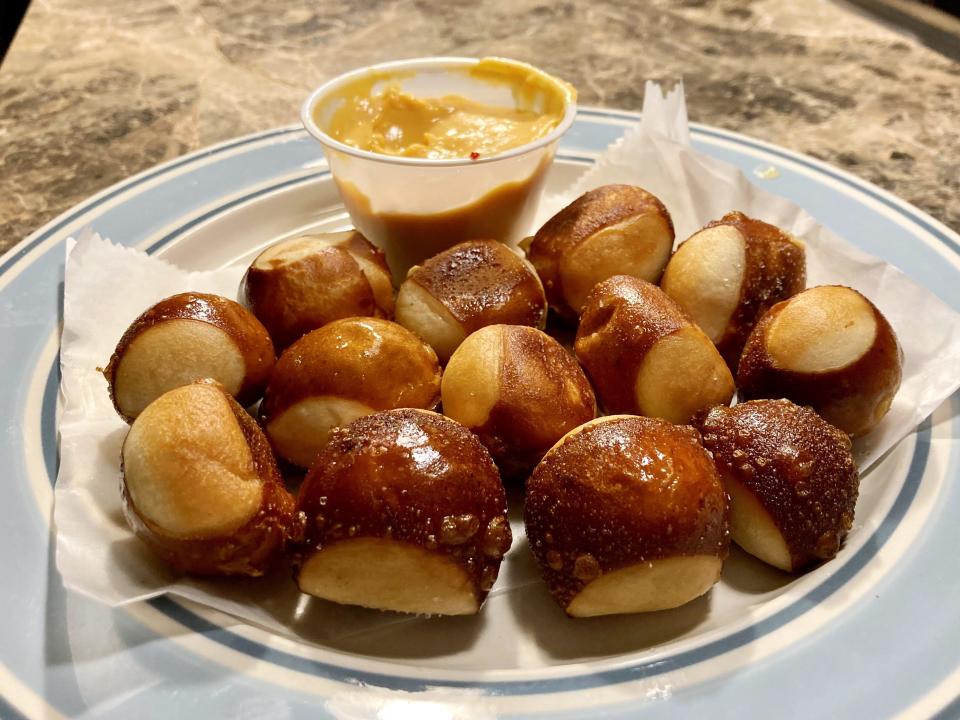
"It's a make-or-break thing when you think about it," Russo said. "If you raise a pizza $1 and you’re breaking even, if you sell 100,000 in a year, one little tweak like that and it’s either you’re back in business or you’re out of business with that one little bump. I don’t think the customer necessarily realizes what the margin is. That (extra) $1 to us keeps the doors open and keeps us a profitable business."
Watson and his management team consistently analyze hot- and cold-selling items to make decisions on what stays and what exits. While the menu changes periodically, the pricing has not until the upcoming adjustments.
He said that while most items will see small increases — some won't rise at all — seafood items, particularly, will see substantial hikes.
This, too, follows a national trend. According to a July 5 story published in the USA Today, a record level of business owners said they plan to raise prices in the next three months to fight inflation.
USDA paints grim forecast
The numbers are staggering.
The United States Department of Agriculture said in its May research report that all food prices are expected to increase between 7.5 and 8.5%, while food at restaurants are expected to make a 6 to 7% jump. It cited the ongoing war in Ukraine and rise of interest rates by the Federal Reserve as contributing factors.
Fats and oils, used for frying and other cooking tasks, are expected to rise between 14 and 15% from 2021 costs. Both are used daily in most every restaurant kitchen.
Costs of eggs, due to the highly pathogenic avian flu (HPAI) in chickens that reduced flock, drove prices up 15 percent from the beginning of April to the end of May and are expected to reach the 20% mark. Dairy prices overall, due to swift increases in consumption, drove retail prices up 2.6% in May are expected to reach the 10.5 to 11.5% mark this year.
HPAI, which affected 40 million birds in 36 states through May, has also done a number on poultry prices as a whole — they are expected to increase 13 to 14%. It's exacerbated by a historically low stock of cold storage in frozen chicken, leading to more demand.
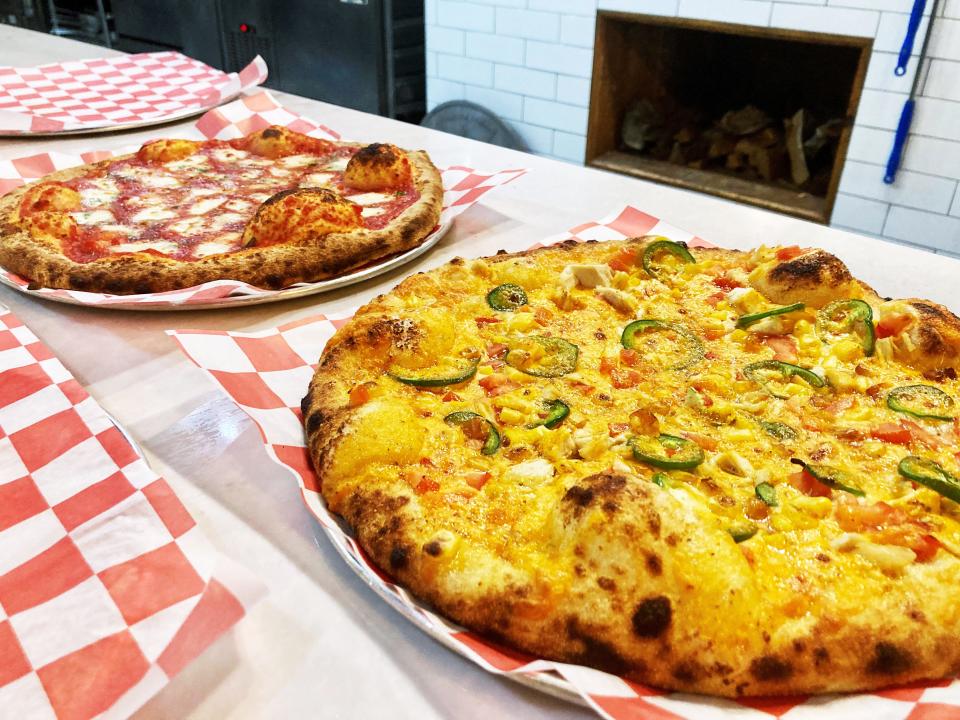
The dairy and meat prices has had a direct impact on Russo's, who said cheese and pepperoni are his biggest costs and most-used products between pizza and salads. The Barn and Champs are also deep into the pizza and salad game.
Product inflation isn't the only place owners are taking the punch.
"On top of it, now we're getting fuel surcharges attached," Turnes said. "You have multiple (food) suppliers, your alcohol suppliers, even the trash company. They’re basically covering their fuel, and a lot are $25 per delivery."
The result? Consumers are forced to pay the price to meet margins, even if the owners would rather not.
For owners not wanting to compromise food quality and frustrate customers by raising costs, it's a difficult, often stressful balancing act.
"We’ve had higher sales from where we were before COVID, but that’s kind of ambiguous because the cost of everything is more," Watson said. "We might be working more and doing more business, but we’re making less. The profitability hasn’t followed the line of increased sales."
Searls said he tries to update customers as much as possible on market trends to prevent being blindsided by rapid increases.
He deals with several restaurants in the Zanesville and Lancaster areas.
"We get inflation reports, commodity reporting, fresh crop reports for produce and the more information I can get to them, the better they can plan and prepare," Searls said. "That's where with my job it isn't all about selling. We really take more to the consultant side of things more so than selling. We will sell if we provide value to the customer and help them be successful. I've got restaurants all over town that do a great job with their menus and cost of goods."
sblackbu@gannett.com; Twitter: @SamBlackburnTR
This article originally appeared on Zanesville Times Recorder: Local restaurants making tough decisions to fight inflation

